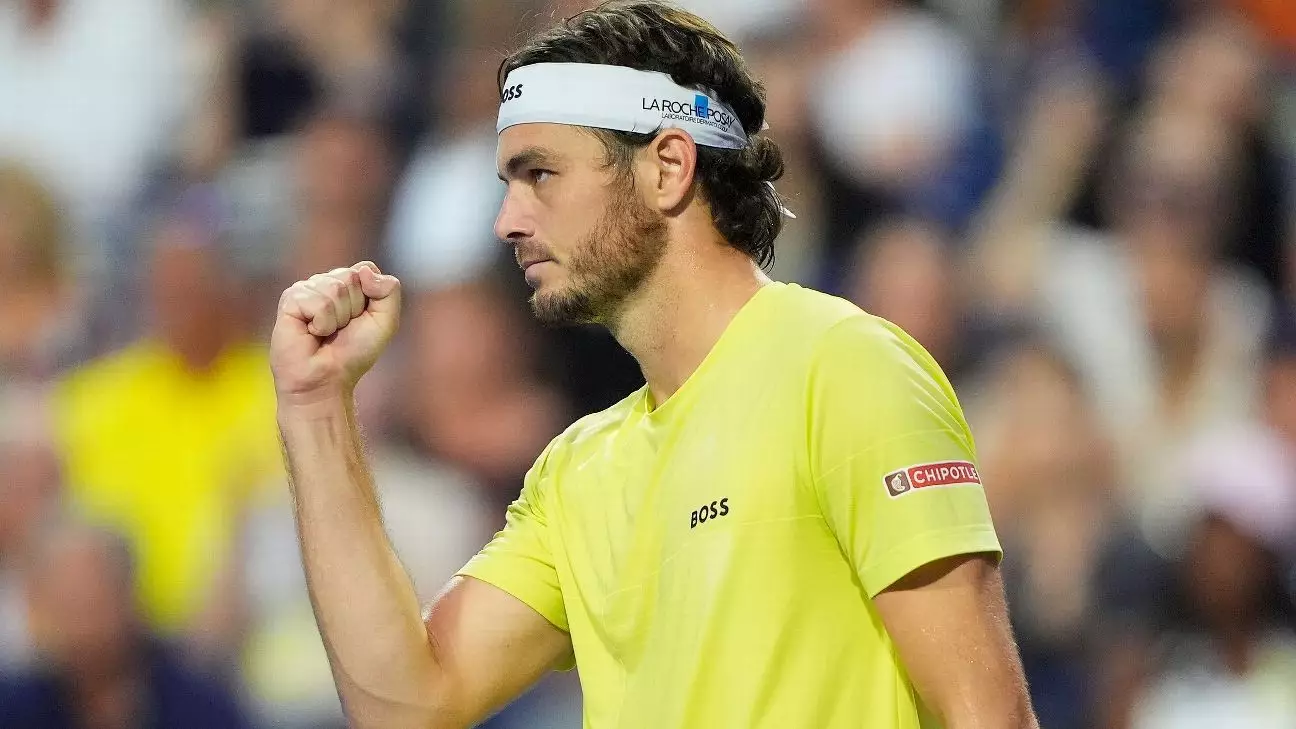The recent quarterfinals at the National Bank Open marked an unprecedented turning point for American men’s tennis. For the first time in over a decade and a half, two Americans—Taylor Fritz and Ben Shelton—advanced to face each other in an ATP Masters 1000 semifinal. This event not only demonstrates a rekindling of American competitiveness on the global stage but also signifies a potential shift in a landscape that has long been dominated by European and Australian players. The significance is immense; it signals optimism that American players are reasserting their presence in the sport’s most elite tournaments.
Emergence of New American Stars
Fritz, a seasoned professional with consistent performance, embodied resilience and precision during his match against Andrey Rublev. His commanding service—delivering 20 aces, including the final, clutch ace—showed a player in control, executing his game plan flawlessly. Meanwhile, Shelton, still emerging as a prominent figure on tour, captured attention by dismantling Alex de Minaur with a streamlined 6-3, 6-4 victory. A promising 22-year-old, Shelton’s breakthrough into the semifinals of such a prestigious event underscores a new generation of American talent ready to challenge traditional tennis powerhouses.
The Significance of the All-American Semifinal
The upcoming clash between Fritz and Shelton isn’t merely a match; it symbolizes a resurgence of American tennis pride. It has been 15 years since the last all-American semifinal at an ATP Masters 1000 event, when Mardy Fish and Andy Roddick made their runs. Now, with both players having proven their mettle, the U.S. can proudly see a future that might lead to renewed dominance in men’s tennis. Shelton’s confidence and statements—highlighting Fritz’s clutch performances and sporting friendship—add an encouraging human element to this historic moment. These players are not only competing but also carrying the torch for a nation hungry for tennis success.
Historical Context and Future Prospects
The last American to secure a Grand Slam victory was Andy Roddick in 2003, highlighting how scarce American success in recent times has been. Shelton’s optimism about breaking this dry spell is contagious; he openly considers the possibility that either he or Fritz could be the future champion. The narrative emerging from this tournament is that American tennis is not only alive but actively evolving, with emerging talents eager to claim their stake on the world stage.
Competition and Remaining Challenges
While Fritz and Shelton enjoy a moment of celebration, the broader picture involves stiff competition from top European and Australian players. Alexander Zverev, a former champion, and Karen Khachanov stand in their path in the semis. This tournament showcases the ongoing global competition—where new talents are rising and veterans continue to challenge. However, the story of American resurgence adds a new layer of excitement: Could this be the beginning of a period where American men reclaim some of their lost glory in tennis?
Broader Implications for U.S. Tennis
What makes this tournament especially noteworthy isn’t just the results but the message it conveys. It indicates that American players are better prepared, more motivated, and perhaps more unified in their quest to dominate tennis once again. Historically, American tennis has been characterized by flashy, powerful players, and now a new wave suggests that these qualities, combined with mental toughness and strategic growth, are helping to forge a pathway back to prominence. This moment could catalyze increased investment in youth development programs and inspire young Americans to dream bigger.
A New Era in American Men’s Tennis?
Looking ahead, the future seems bright but uncertain. The spotlight is now on Fritz and Shelton to translate this hard-fought success into sustained dominance. If they manage to capitalize on this momentum—possibly even clinching Masters 1000 titles—it could serve as a powerful catalyst for American tennis to reclaim its former glory. Their journey embodies hope, resilience, and a willingness to embrace the responsibility of carrying American tennis into the next chapter.
This historic semifinal not only shakes up the current tennis landscape but also renews the collective American hope for tennis greatness. With each serve and rally, Fritz and Shelton are rewriting history, challenging stereotypes, and inspiring a new generation to believe in the power of American talent on the world stage.

